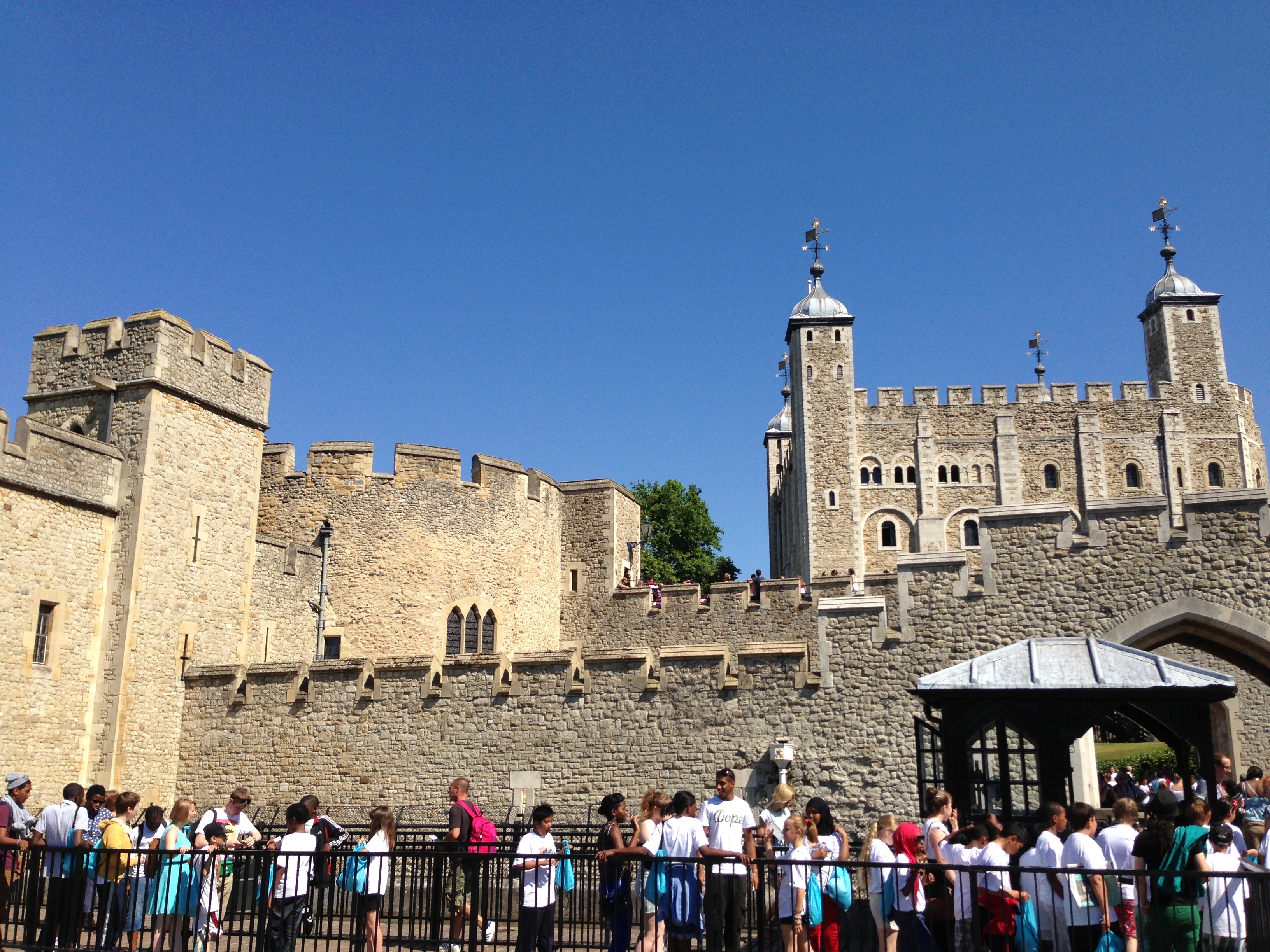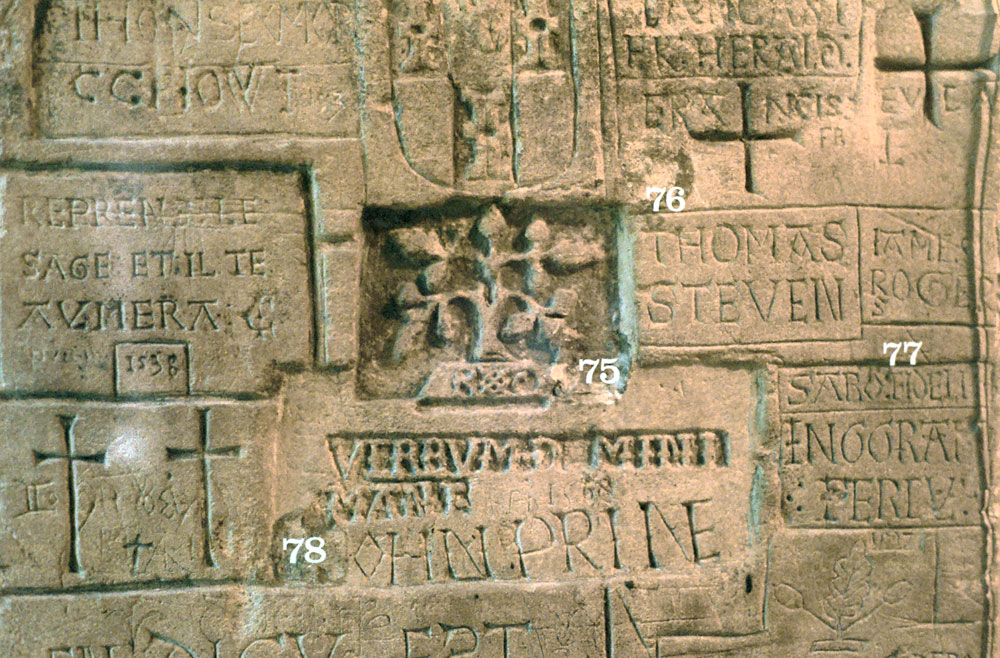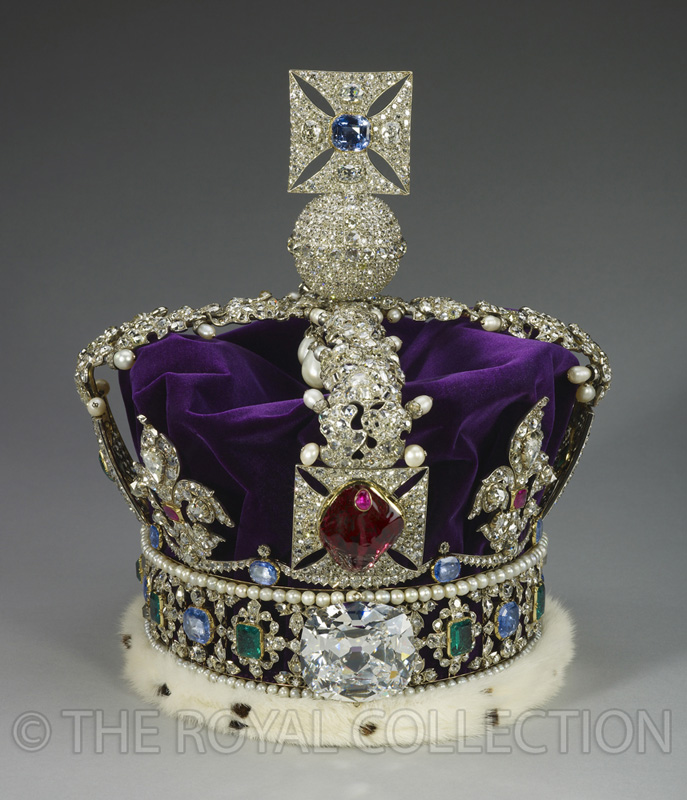We visited the Tower of London Thursday. While originally a grand palace and royal residence, it is most famous for the important people who have been imprisoned and even executed there (though most executions took place elsewhere). Among them: Anne Boleyn and Catharine Howard (wives of Henry VIII) – who were 2 of the 7 executed on the grounds, Princess Elizabeth (later Queen Elizabeth I – “the Virgin Queen”) who was imprisoned but not executed – obviously, and Sir Walter Raleigh (known for bringing tobacco to England from America), who was there for 13 years.

The inside of the Beauchamp Tower has remarkably well preserved carvings made by prisoners held there, mostly in the 1500s and 1600s.

On a lighter note, the Tower houses the Crown Jewels, including the Imperial State Crown, worn by the Queen at Opening of Parliament and for coronations.

The fact that any of The Queen’s Crown Jewels remain intact is astonishing considering their past… (from hrp.org.uk)
- It is believed that King John lost the Crown Jewels in 1216
- Edward III (1327 – 1377) used the Crown Jewels as collateral to pay his troops
- Henrietta Maria, the wife of Charles I, pawned the Crown Jewels at the beginning of the Civil War
- Oliver Cromwell ordered the Crown Jewels to be broken up, symbolising the destruction of the
monarchy - The Crown Jewels were nearly stolen in 1671. The dashing Irishman Colonel Blood knocked the Jewel House keeper on the head with a mallet and squashed the arches of Charles II’s State Crown so as to hide it under his cloak.
- The British monarchy is the only monarchy in Europe that still uses its Crown Jewels in coronation ceremonies
The Queen, we were told, when the Crown is placed upon her head for the opening of Parliament, is known to say, “Ah, my best hat.” Indeed.
